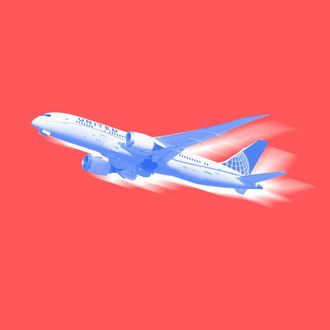
It’s the middle of the summer, which means that the year’s peak travel period has arrived. With summer Fridays causing huge amounts of airport traffic, there’s a good chance you or someone you know will be traversing the skies at some point this season. Many of us have complicated feelings about flying, so researchers have sought to explain some common air-travel conundrums and behaviors.
Here are three interesting facts about the psychology of flying:
1. Seat upgrades can cause psychological backlash.
Every packed-in coach passenger has dreamed of being given a surprise upgrade to the roomy, glittering world of first class, but as it turns out there’s a downside to upgrades. A 2013 study in the Journal of Travel Research found that such unexpected upgrades in fact produced feelings of guilt and displeasure in many subjects. The study determined that for certain guilt-prone individuals, the delight at receiving the upgrade was tempered by a nagging “existential guilt” elicited by the random receipt of a benefit they had not earned. The subjects felt particularly guilty when they received the upgrade but their friends or traveling companions did not.
While airline administration probably feels that seat upgrades are a boon to customer satisfaction, the study discovered that some passengers who received an upgrade (while their friends did not) actually reported a decreased desire to fly with the airline again.
2. Your fear of flying may be costing you – literally.
If you’re afraid of flying, you’re far from alone — recent studies note that up to 40 percent of people experience some degree of anxiety over air travel. A 2012 study in the Journal of Travel Research found that an individual’s fear of flying wields significant influence on their flight and airline preferences. Those with a more intense fear of flying are more likely to cite their country’s national carrier as their airline of choice, likely because the ability to communicate with the flight crew in one’s native language is a comforting attribute.
Increased fear also correlated with a stronger preference for daytime and non-stop flights. And nervous flyers are willing to pony up for that sense of security — they said they’d pay up to several hundred dollars more for national carriers or non-stop flights than their less fearful counterparts did.
3. Your impatience while boarding a plane is justified.
Perhaps you grow a little annoyed when airplane boarding means circumventing aisle bottlenecks and dodging other people’s luggage – and rightfully so. A 2011 experiment comparing five different boarding methods determined that the process employed by the majority of airlines today actually ranks among the two slowest options.
The study found that boarding from the back to the front of the plane (the technique bearing the greatest resemblance to the one we encounter at most airports) took more than six minutes to complete, while the “Steffen method” – the brainchild of astrophysicist Jason Steffen, which requires passengers to board in a very particular order to minimize seat and aisle interferences – only took about three and a half. The study’s authors even predicted that implementing the Steffen method could save the airline industry millions of dollars each year. (Vox has a good recent article if you want more information about the science of plane-boarding.)

